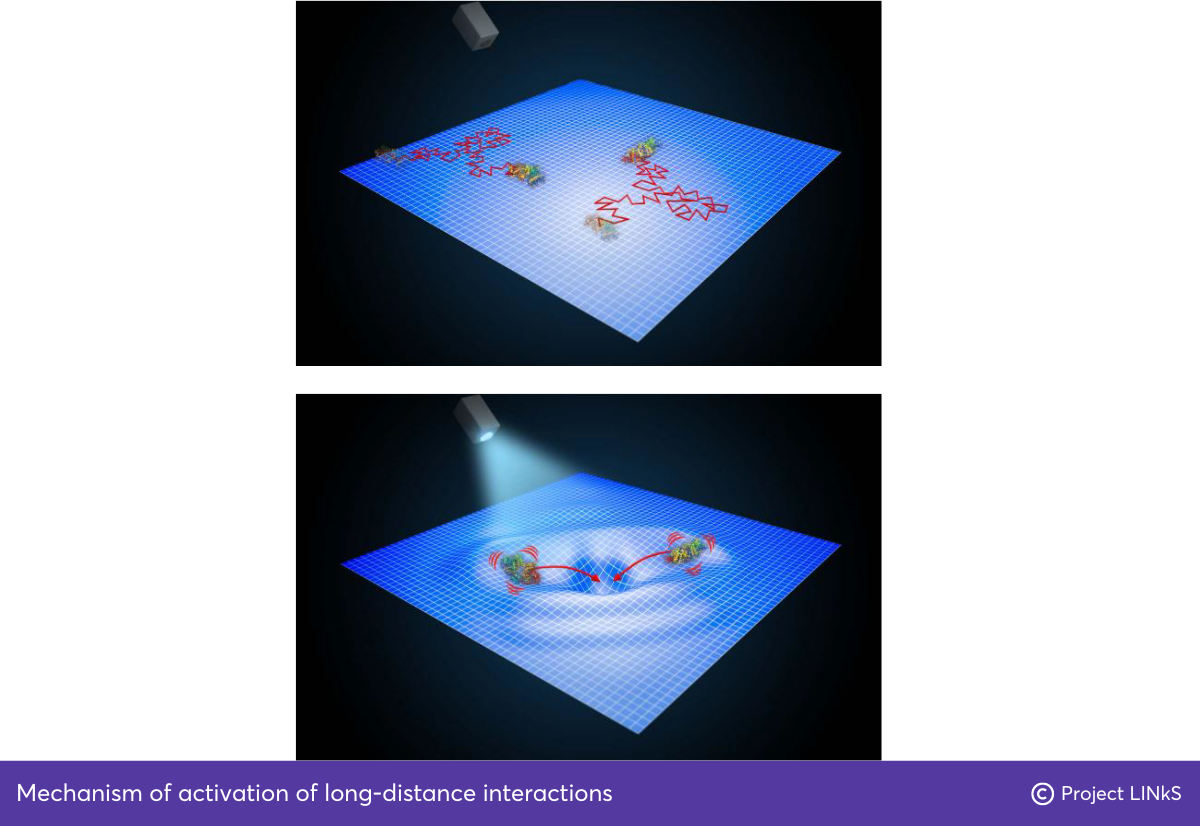Stories: EU-funded project LINkS finds breakthrough technology for measuring long-range protein
Funded by the European Innovation Council (EIC) Pathfinder programme, project LINkS discovered experimental evidence of long-range attractive forces between cellular proteins. Led collaboratively by Professors Marco Pettini of CPT and Didier Marguet of CIML both at Aix-Marseille University and Jérémie Torrès of IES at Montpellier University, under the aegis of the French National Centre for Scientific Research (CNRS), this finding was published in the scientific journal Science Advances (AAAS) under the title “Experimental evidence for long-distance electrodynamic intermolecular forces“.
Made of a consortium of 8 partners, all working in the research and scientific areas, project LINkS aims to unveil long-range electrodynamic interactions (LEDIs) between biomolecules as a mechanism which sustains molecular dynamics in cells. For this purpose, researchers are developing a biosensor technology that can measure LEDIs in the real complexity of biological systems. Long-term, the LINkS technology will help understand how electromagnetic fields impact living organisms and assist in drug discovery and biomarker identification efforts in research and medicine.
Due to research efforts taking place in the context of the project, it has been shown that the activation of long-range forces only occurs when the molecules are driven out of thermal equilibrium. Revealed through an original experimental technique based on terahertz spectroscopy in solution and fluorescence correlation spectroscopy and corroborated by theoretical calculations, this discovery sheds new light on the recruitment of biomolecular reaction partners over long distances.
The findings have been published on 16 February 2022 in Science Advances, in a research paper that showcases and presents the peer-reviewed experimental proof of the principle of the activation of completely new forces acting between biomolecules and expanding above several hundreds of Angstroms. It opens a new domain of research to explain the high spatial organisation and coordination of biomolecular reactions responsible for the transmission of information in cells and their functioning.

The author demonstrates the discovery of completely new electrodynamic forces acting between biomolecules and extending beyond several hundreds or even thousands of Angstroms, opening up a new representation of protein interaction mechanisms. As explained by Professor Jérémie Torrès from the IES/Montpellier University: “This is the combination of a very sensitive experimental set-up with a physical mechanism that gives you an absorption that is even higher than water due to this collective dipole moment.”
In addition, “this experimental discovery is of fundamental physical relevance as it will require extending the list of known intermolecular interactions commonly described in scientific textbooks. Moreover, this result could bring a paradigm-shifting in biophysics”, explains Professor Marco Pettini from the CPT/Aix-Marseille University.
The project leading to this publication received funding from the Excellence Initiative of Aix-Marseille University (A*MIDEX) under the project MOLINT led by Professor Marco Pettini and from the European Innovation Council (FET Open, currently Pathfinder programme) under the Project LINkS, currently being conducted by Professor Jérémie Torrès.
Read the full article on the EIC website : here
